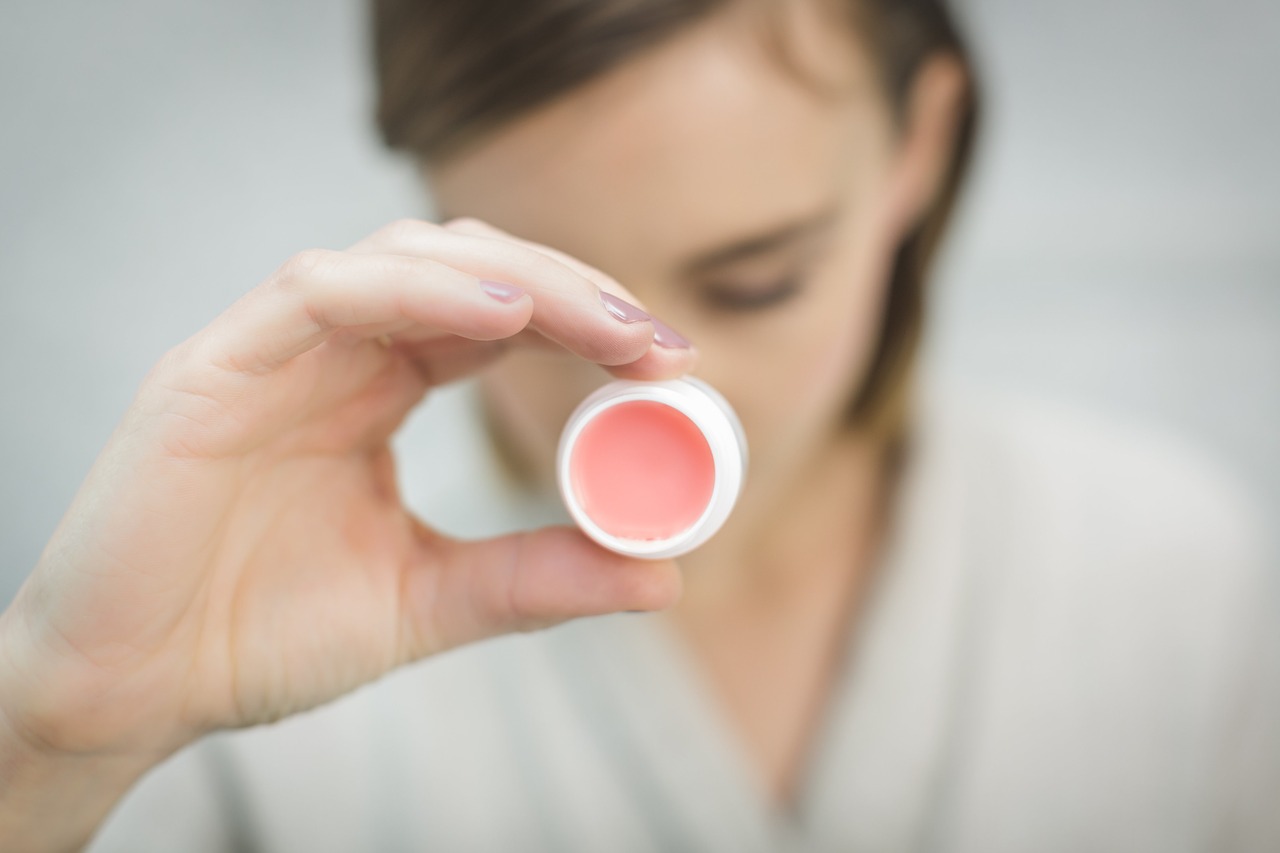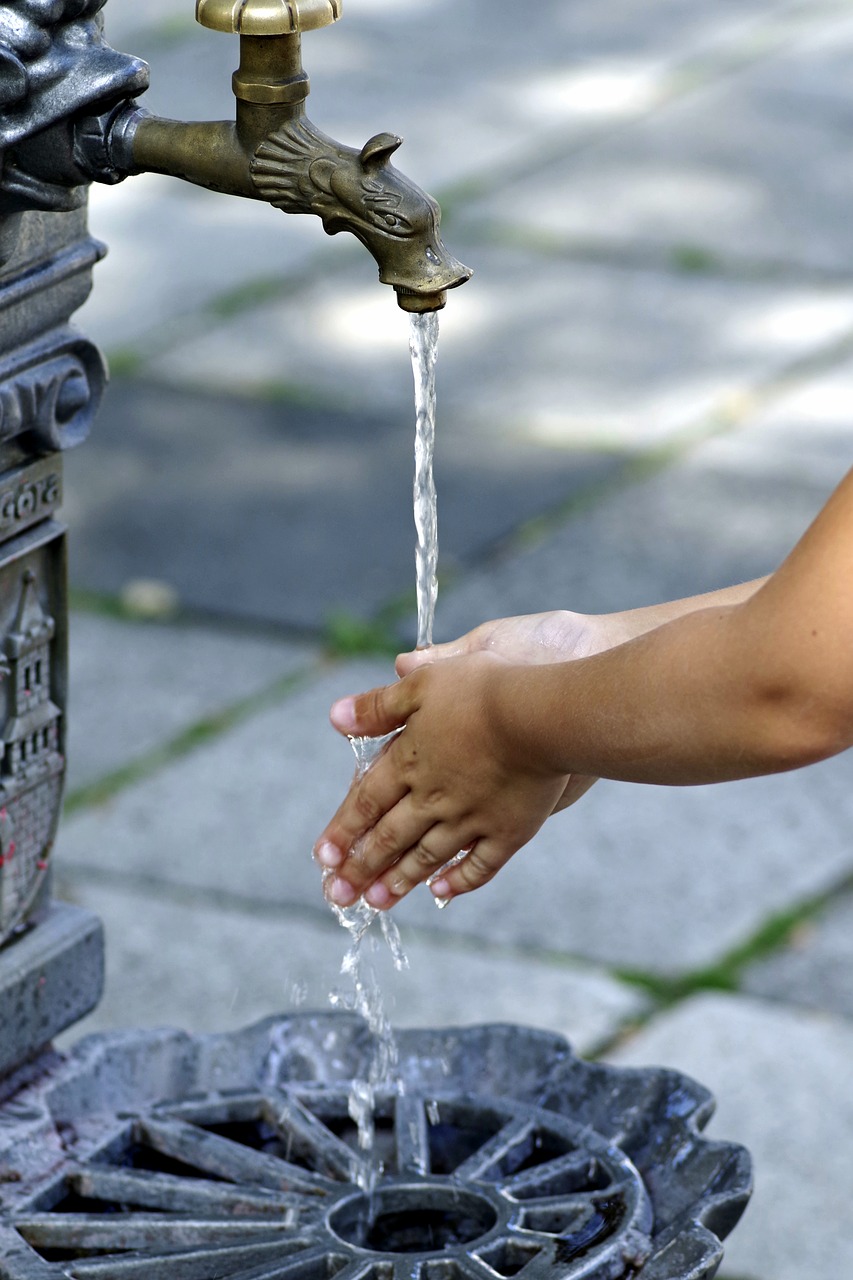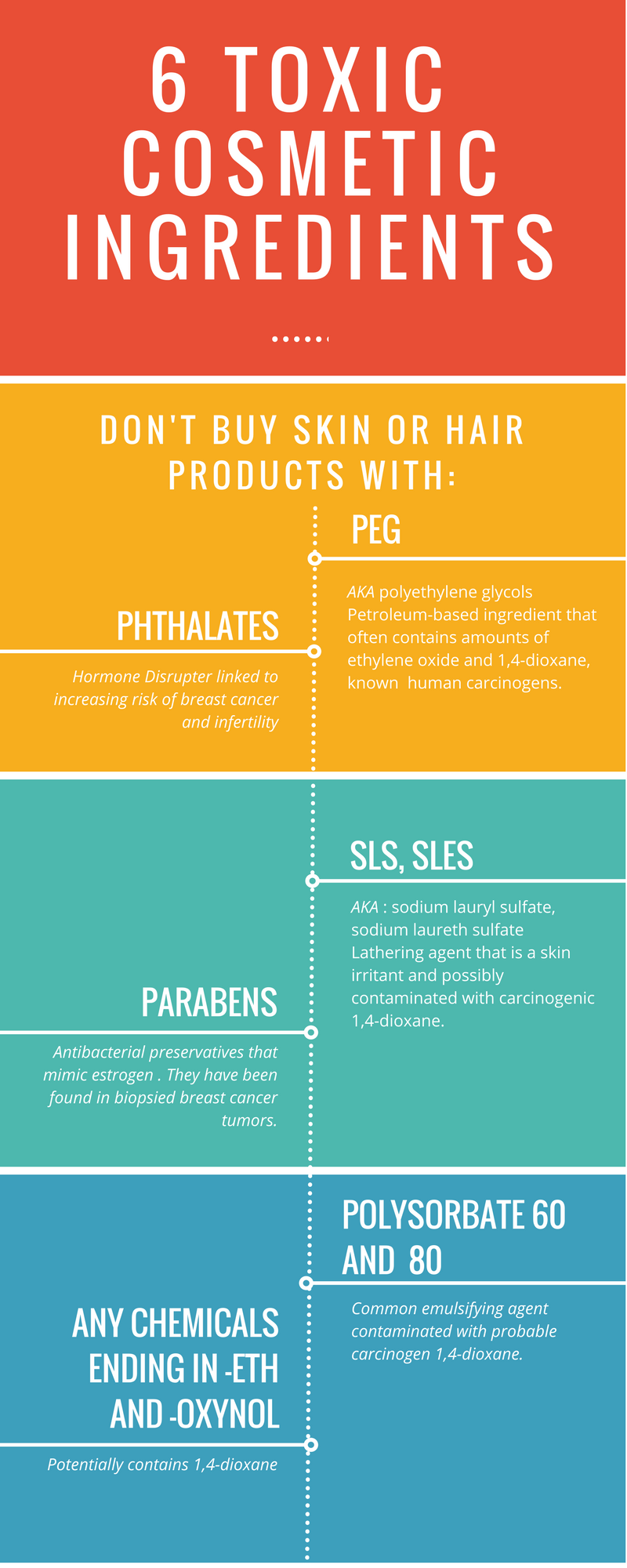
9 years ago, consumers of natural beauty products were shocked to find their favorite brands contained a hidden toxic cosmetic ingredient not listed on labels: 1,4-dioxane. Brands like Wholefoods 365, Alba, and Nutribiotic were sued by the state of California. Popular natural brands like Kiss My Face, Jason, Ecover, Lifetree, Giovanni, Seventh Generation, Method, and Earth Friendly Products tested positive in 2008. Organic Consumers Association National Director Ronnie Cummins explains:
We used an independent laboratory and found that numerous ‘natural’ and ‘organic’ brands tested positive for 1,4-Dioxane, a cancer causing contaminant resulting from the petrochemical ethylene oxide being attached to one or more ingredients.((https://www.organicconsumers.org/press/california-files-lawsuit-against-whole-foods-avalon-and-others-whose-products-tested-positive))
1,4-dioxane may not be on labels. Knowing which toxic cosmetic ingredients result in this dangerous byproduct can protect our drinking water from these hidden contaminants.
According to the Environmental Working Group (EWG), 1,4-dioxane “was detected in samples of drinking water supplies for nearly 90 million Americans in 45 states”.((http://www.ewg.org/research/hidden-carcinogen-taints-tap-water-consumer-products-nationwide?utm_source=newsletter&utm_campaign=201709News&utm_medium=email#.WbgIg8bMyRs))

How is the 1,4 dioxane getting into municipal tap water supplies? (You can view an interactive map here to see if your local water was tested.) 1,4-dioxane is a common byproduct/impurity found in household cleaners and toxic cosmetic ingredients. It can cause miscarriages, kidney and liver damage, as well as cancer.
How prevalent is 1,4-dioxane in cleaners and cosmetics?
The OCA reports it is found in:
* 97% of hair relaxers
* 82% of hair dyes and bleaching
* 66% of hair removers
* 57% of baby soap
* 45% of sunless tanning products
* 43% of body firming lotion
* 36% of hormonal creams
* 36% of facial moisturizers
* 35% of anti-aging products
* 34% of body lotion
* 33% of around-eye creams((https://www.organicconsumers.org/news/natural-consumer-products-found-contaminated-cancer-causing-14-dioxane-groundbreaking-analysis))
Some natural and organic beauty and personal care companies have cleaned up their act. The only way to know for sure your products are safe is avoid the toxic cosmetic ingredients that create 1,4-dioxane.
EWG has found 1,4-dioxane in 46% of personal care products and gives the toxin a hazard score of 8 (10 being the most toxic). EWG explains:
The chemical is an unwanted byproduct of an ingredient processing method called ethoxylation used to reduce the risk of skin irritation for petroleum-based ingredients. Though 1,4-dioxane can easily be removed from products before they are sold, its widespread presence in products indicates that many manufacturers fail to take this simple step…
In a review conducted in 1982, the industry-funded Cosmetic Ingredient Review panel noted that the cosmetic industry was aware of the problem of 1,4-dioxane in cosmetics and was making an effort to reduce or remove the impurity (CIR 2006). But decades later, FDA expresses continuing concerns about 1,4-dioxane, noting its potential to contaminate a wide range of products, and its ready penetration through the skin (FDA 2007). FDA notes that 1,4-dioxane can be removed ‘by means of vacuum stripping at the end of the polymerization process without an unreasonable increase in raw material cost’ (FDA 2007), but such treatment would be voluntary on the part of industry.((https://www.ewg.org/skindeep/ingredient/726331/1%2C4-DIOXANE/#))
6 Toxic Cosmetic Ingredients to Avoid & Protect Tap Water
If a cosmetic label includes any of the following ingredients, there’s a possibility so does 1,4-dioxane.
You won’t find 1,4-dioxane listed on any labels, just the toxic cosmetic ingredients that contain them.
Remember, these ingredients are often found in products labeled as “natural” and “organic”.
There are six ingredients specifically consumers should read labels for and avoid, many of which potentially contain 1-4, dioxane or are otherwise hazardous.((http://www.ewg.org/research/hidden-carcinogen-taints-tap-water-consumer-products-nationwide?utm_source=newsletter&utm_campaign=201709News&utm_medium=email#.WcvPmMbMyRu))((http://www.lesstoxicguide.ca/index.asp?fetch=personal)) Keep this list handy when shopping.
- PEG: Polyethylene Glycol, Polyethylene: Petroleum-based ingredient that often contains amounts of ethylene oxide and 1,4-dioxane, known human carcinogens.
- Phthalates: Hormone Disrupter linked to increasing risk of breast cancer and infertility.
- SLS, SLES: Sodium Lauryl Sulfate, Sodium Laureth Sulfate: Lathering agent that is a skin irritant and possibly contaminated with carcinogenic 1,4-dioxane.
- Parabens: Antibacterial preservatives that mimic estrogen. They have been found in biopsied breast cancer tumors.
- Polysorbate 60 and Polysorbate 80: Common emulsifying agent contaminated with probably carcinogen 1,4-dioxane.
- Any chemicals ending in –eth and –oxynol: Potentially contains 1,4-dioxane
Read your labels and protect your health and drinking water from these toxic cosmetic ingredients.

Image: StockSnap / Pixabay

Leave a Reply